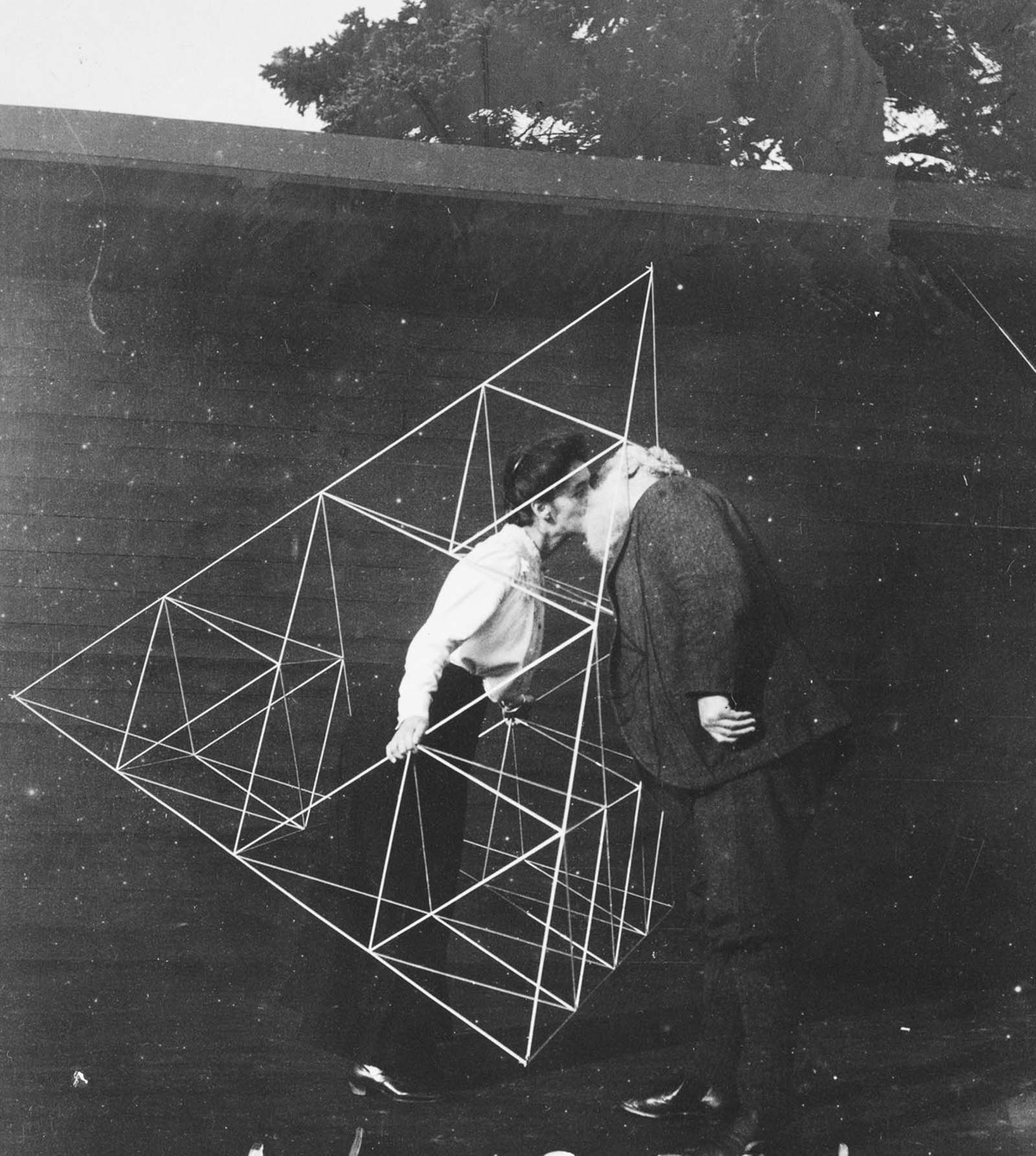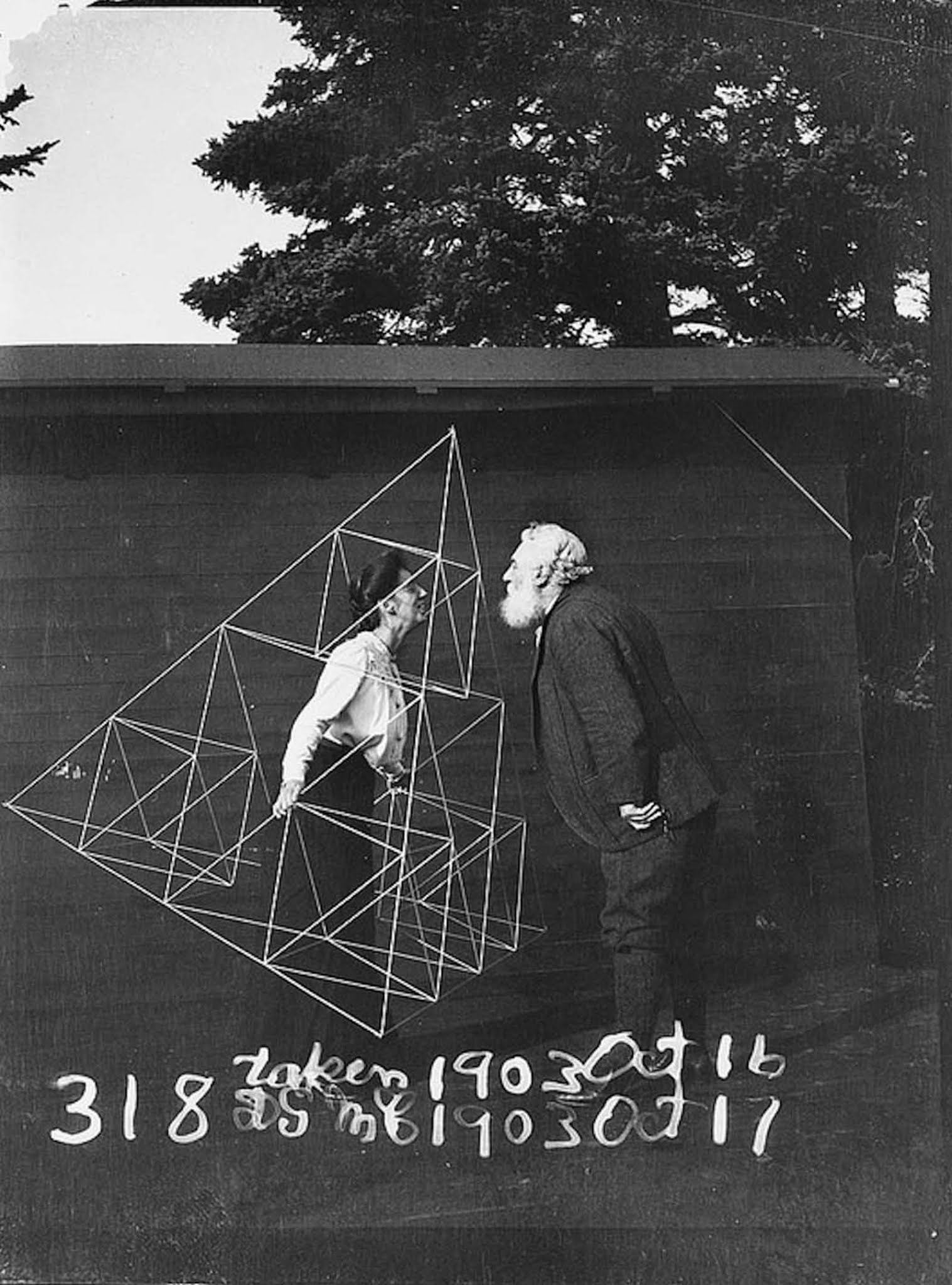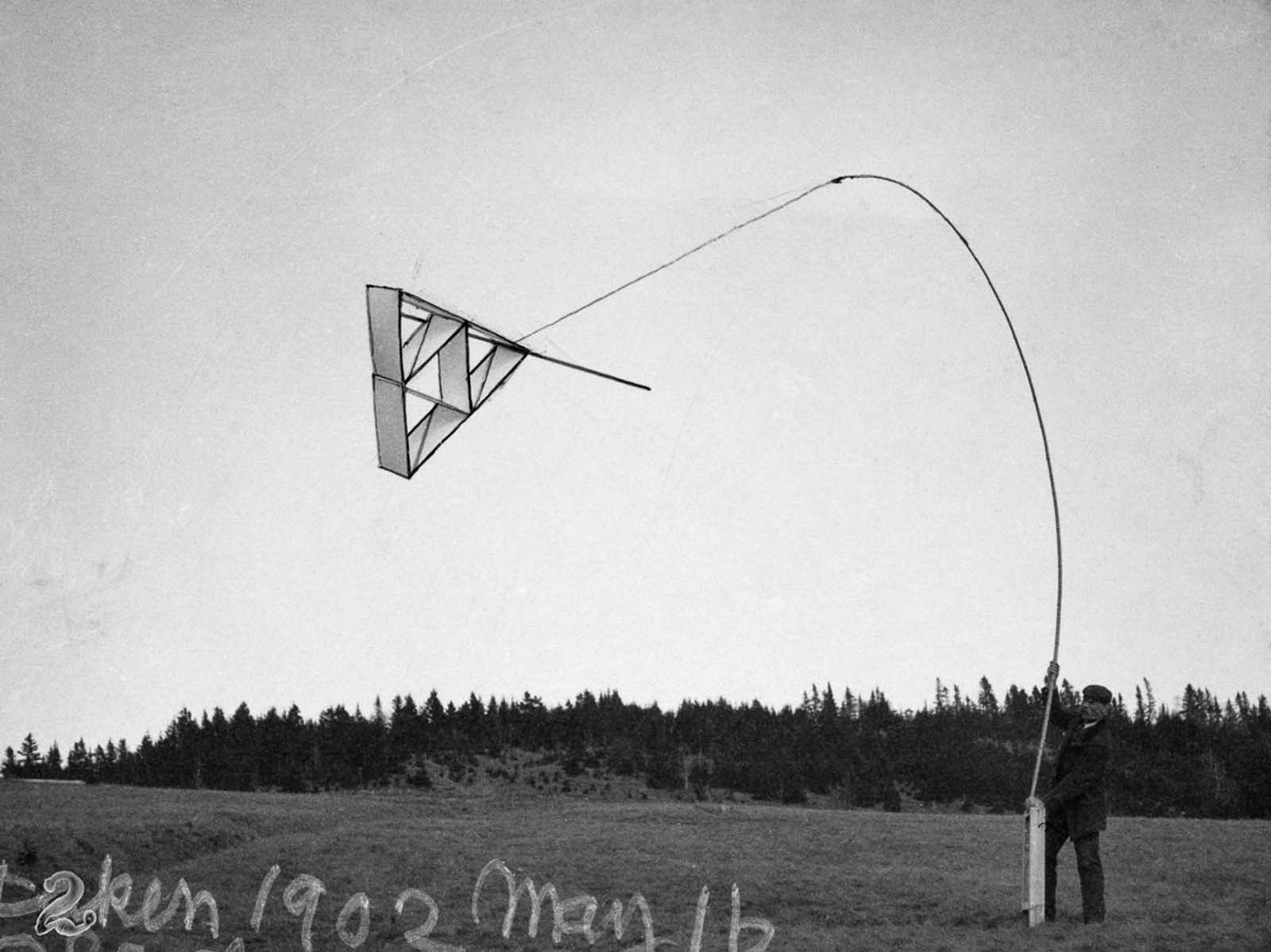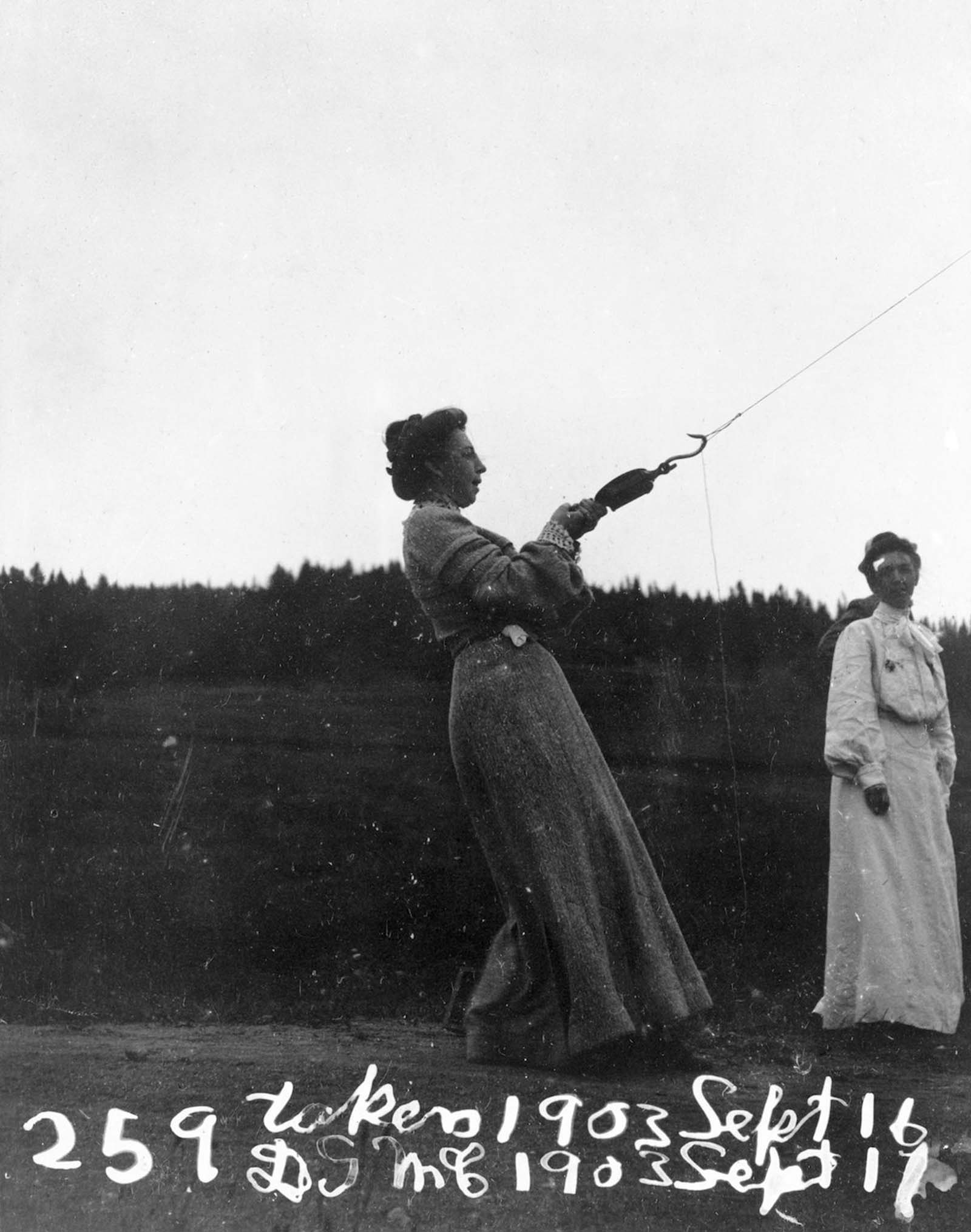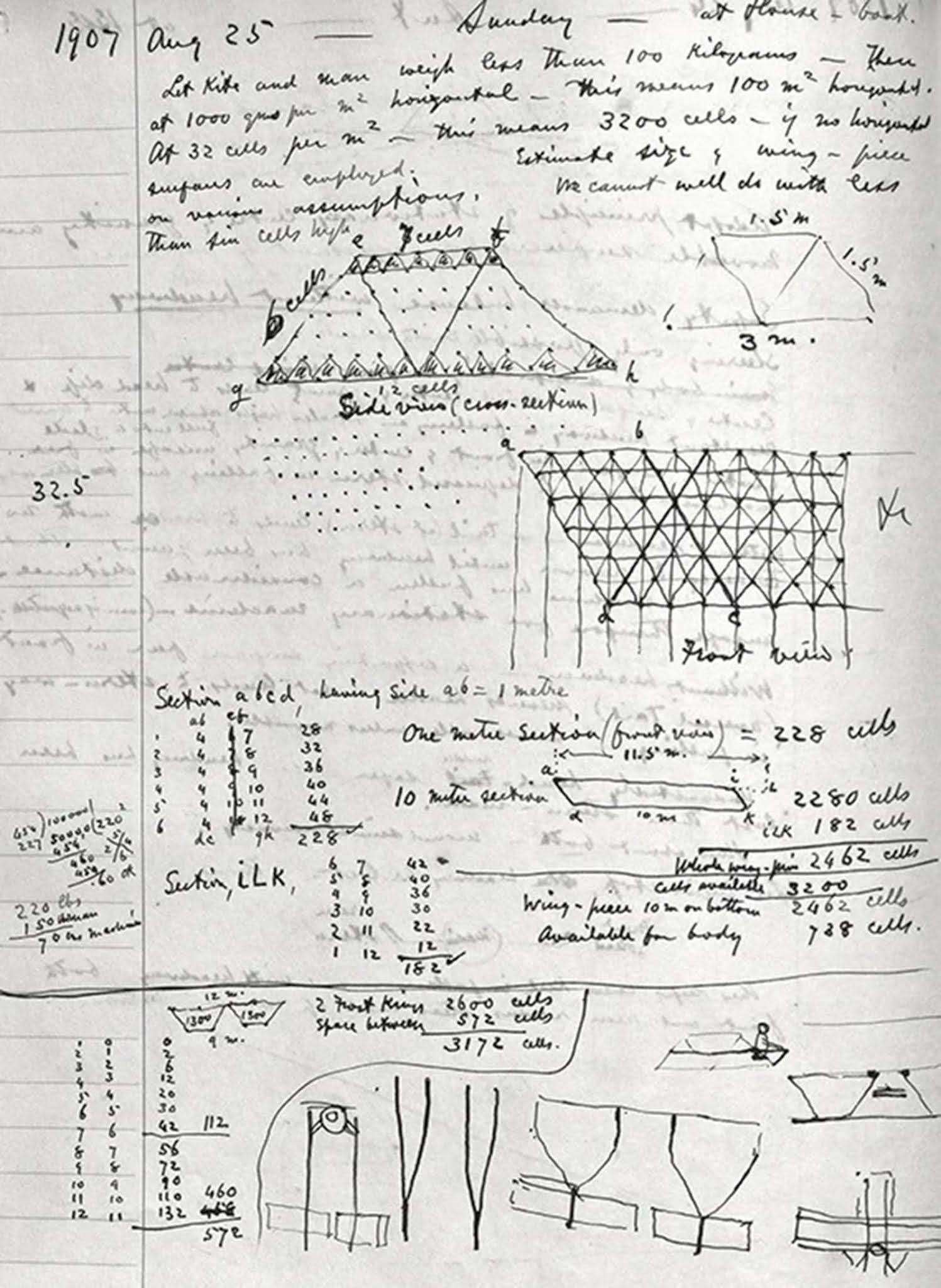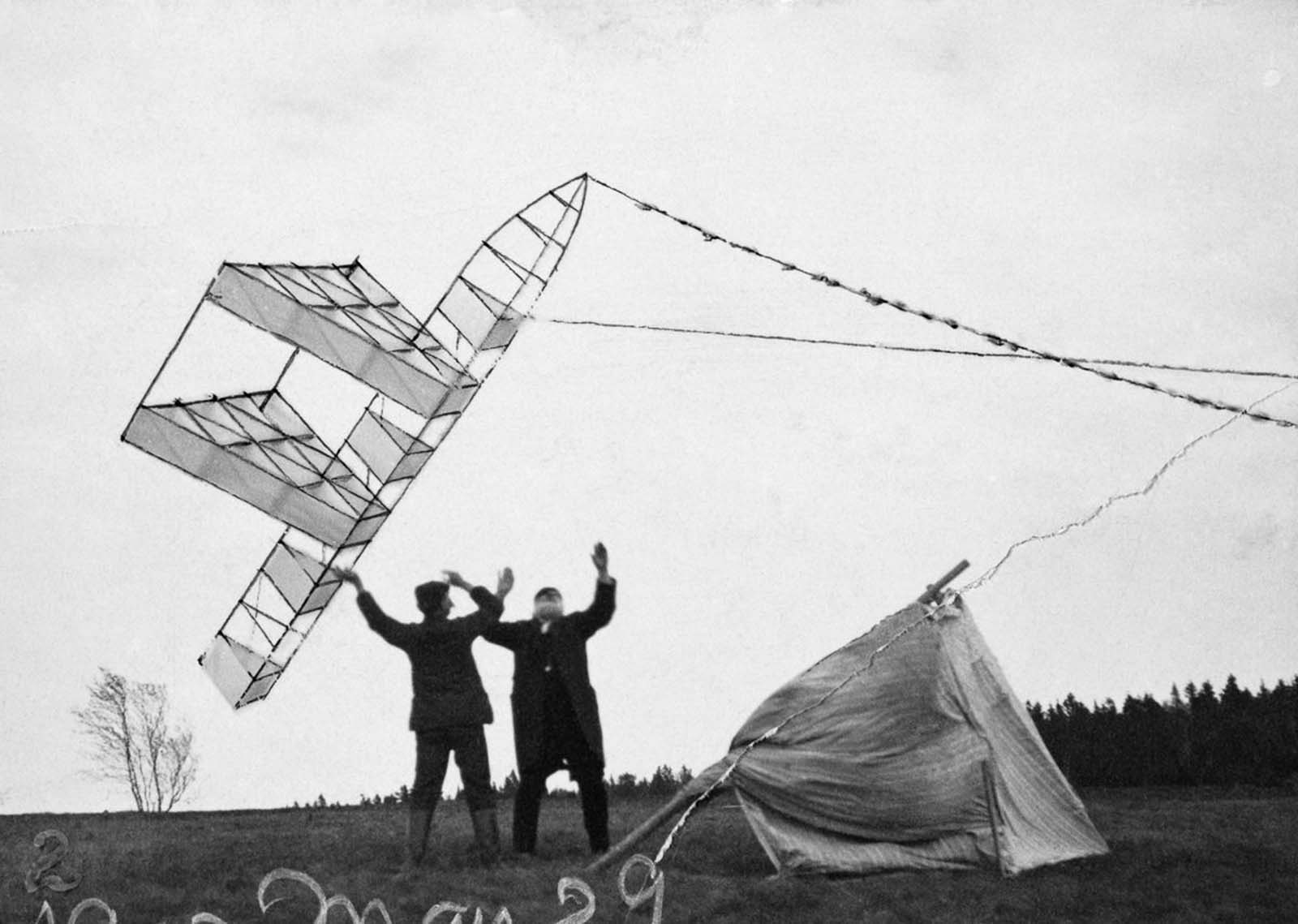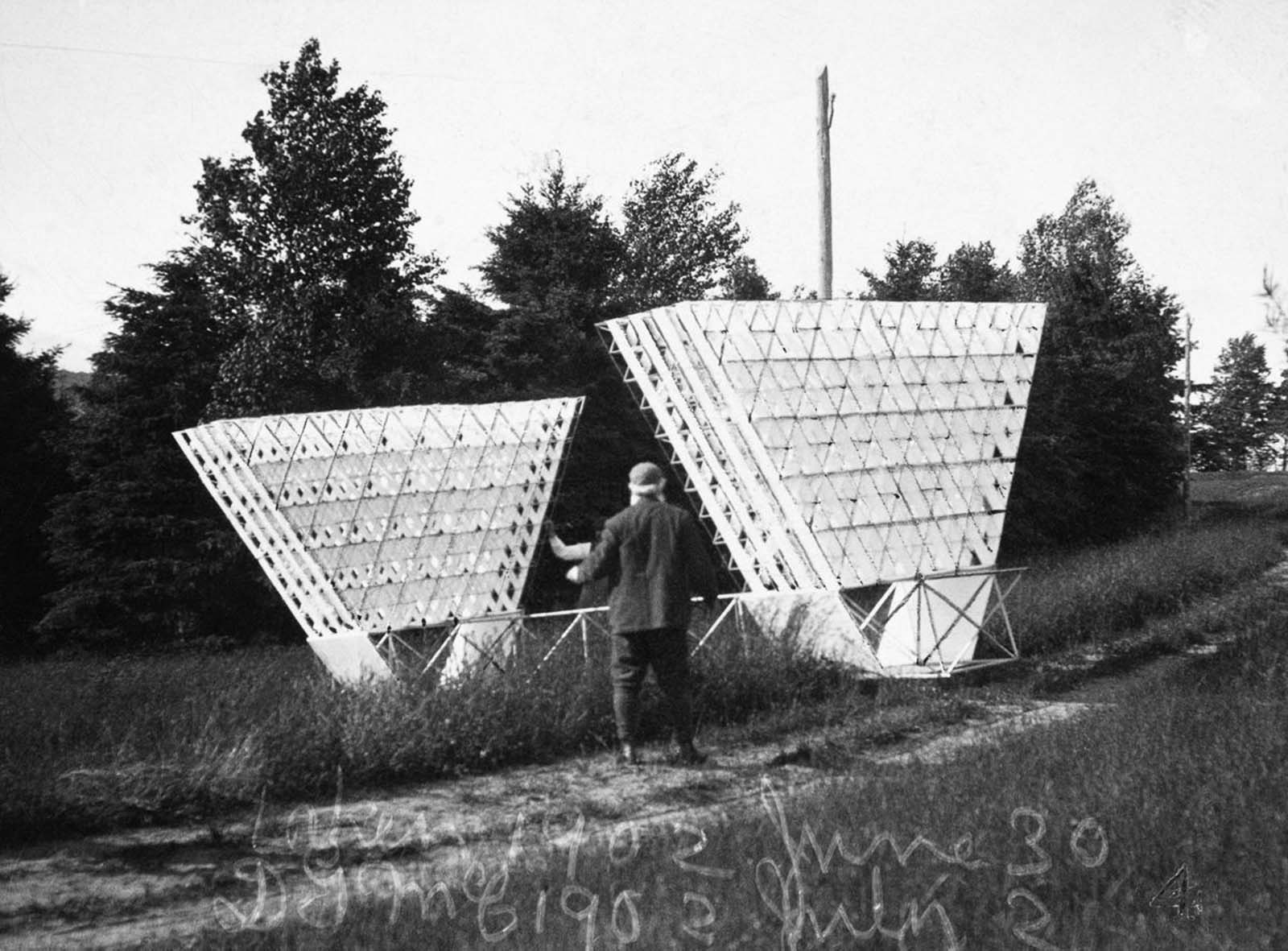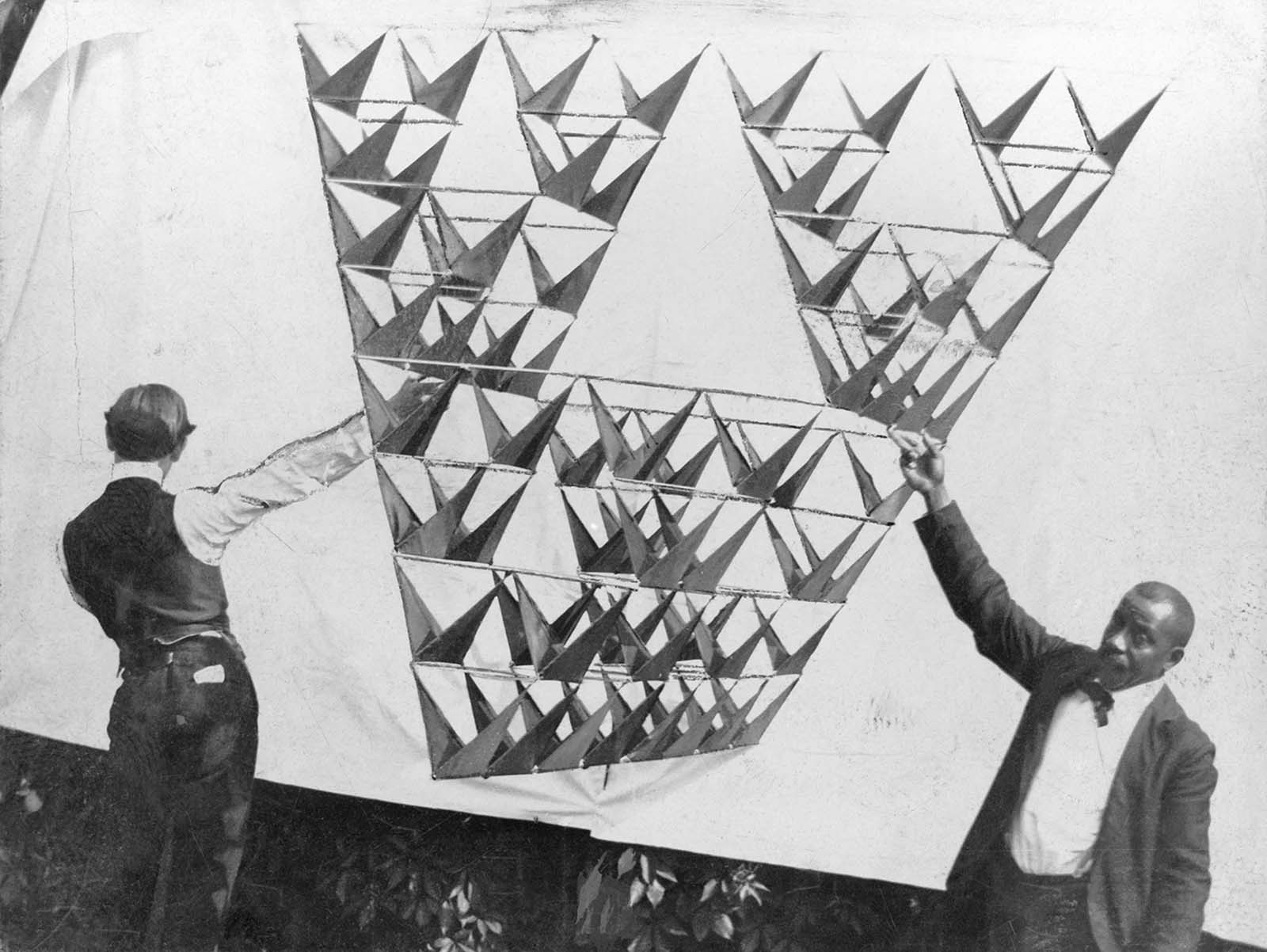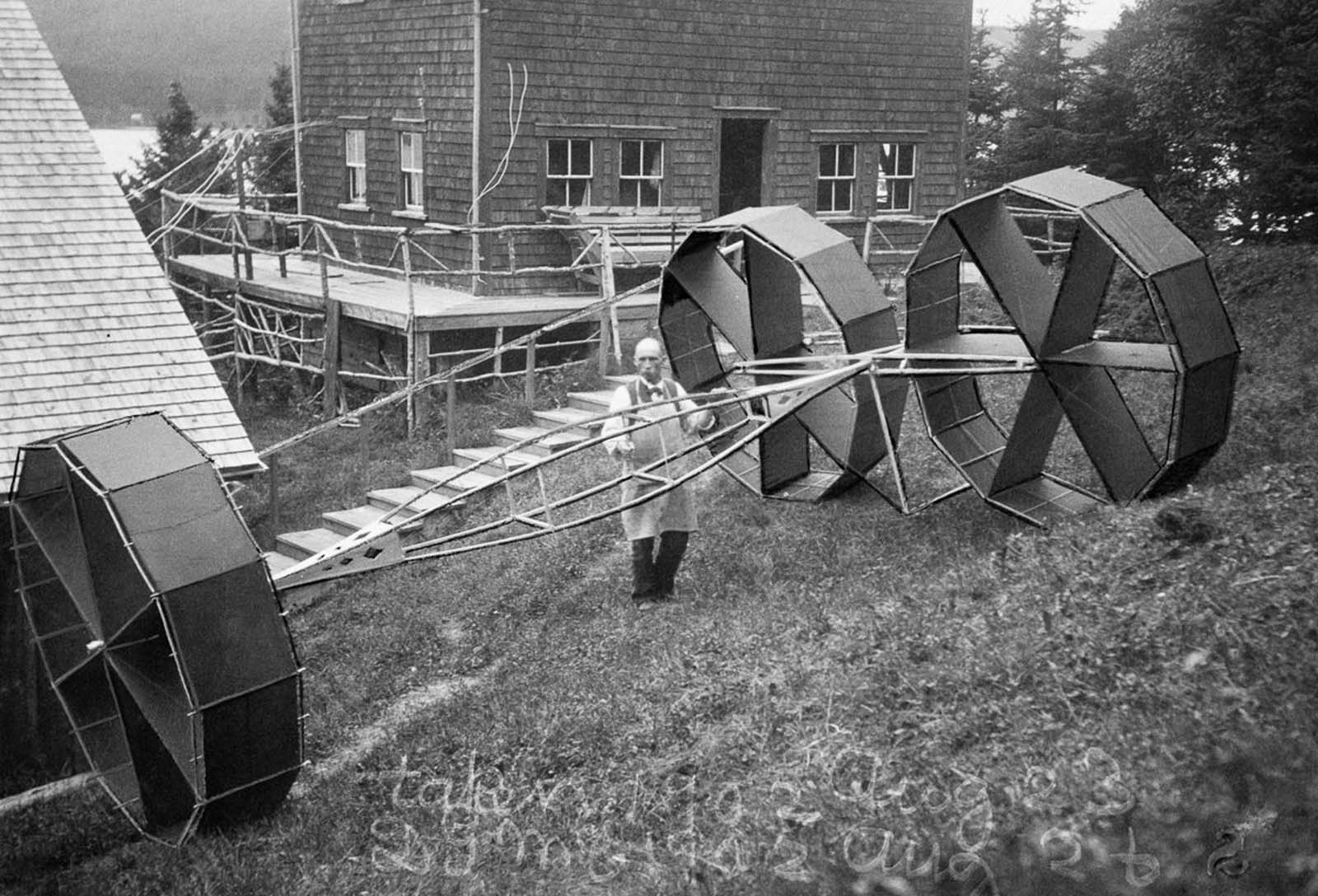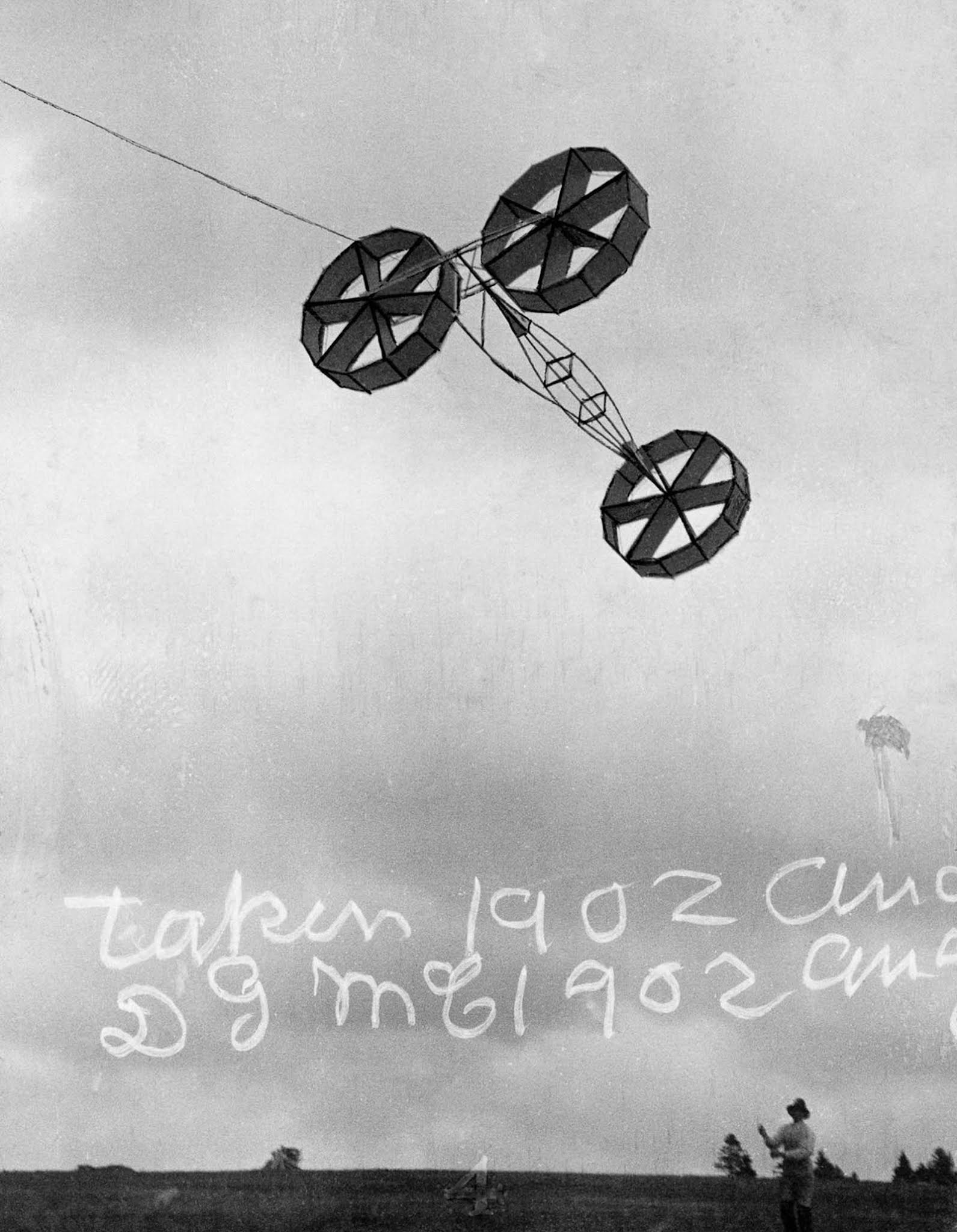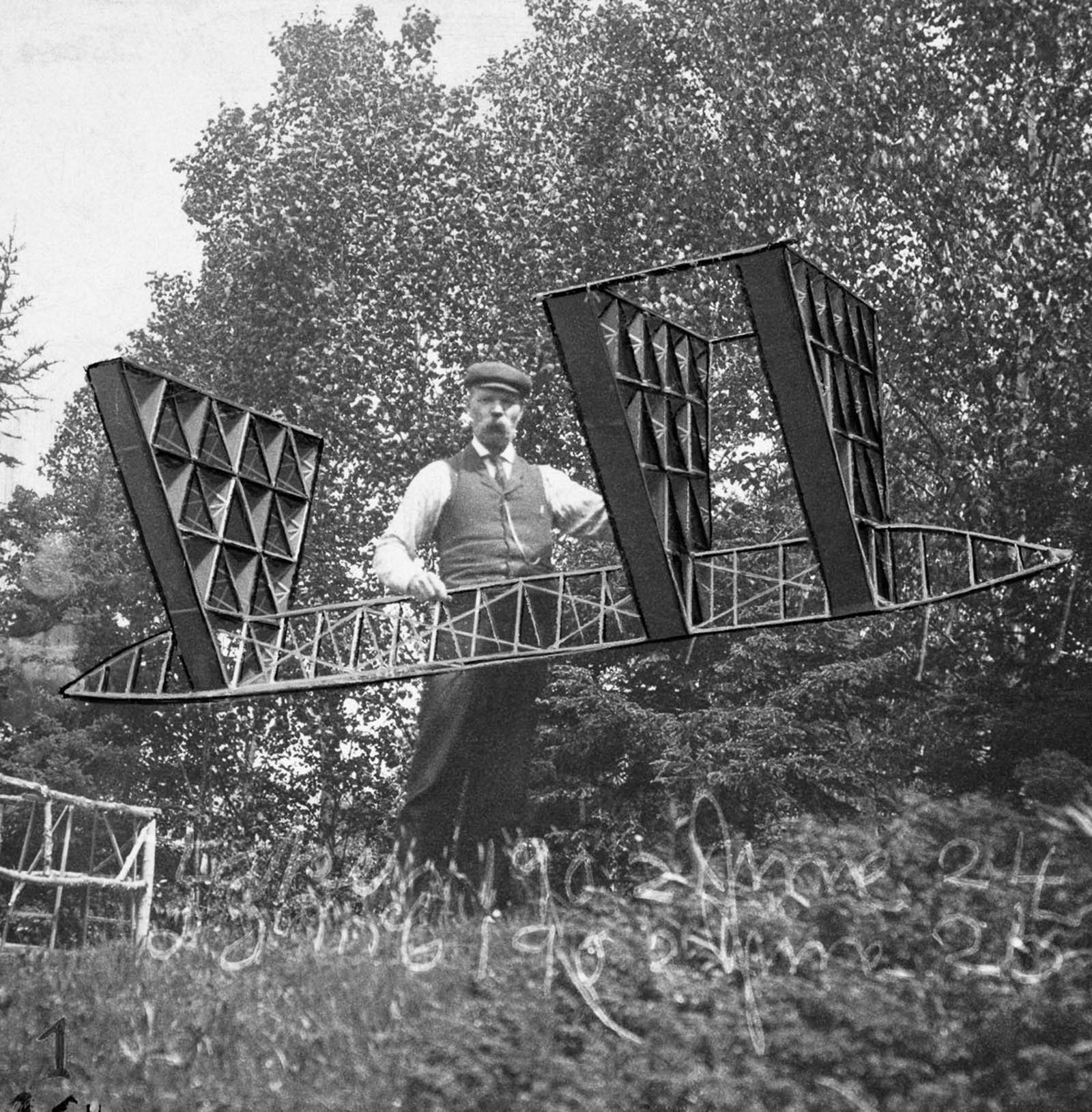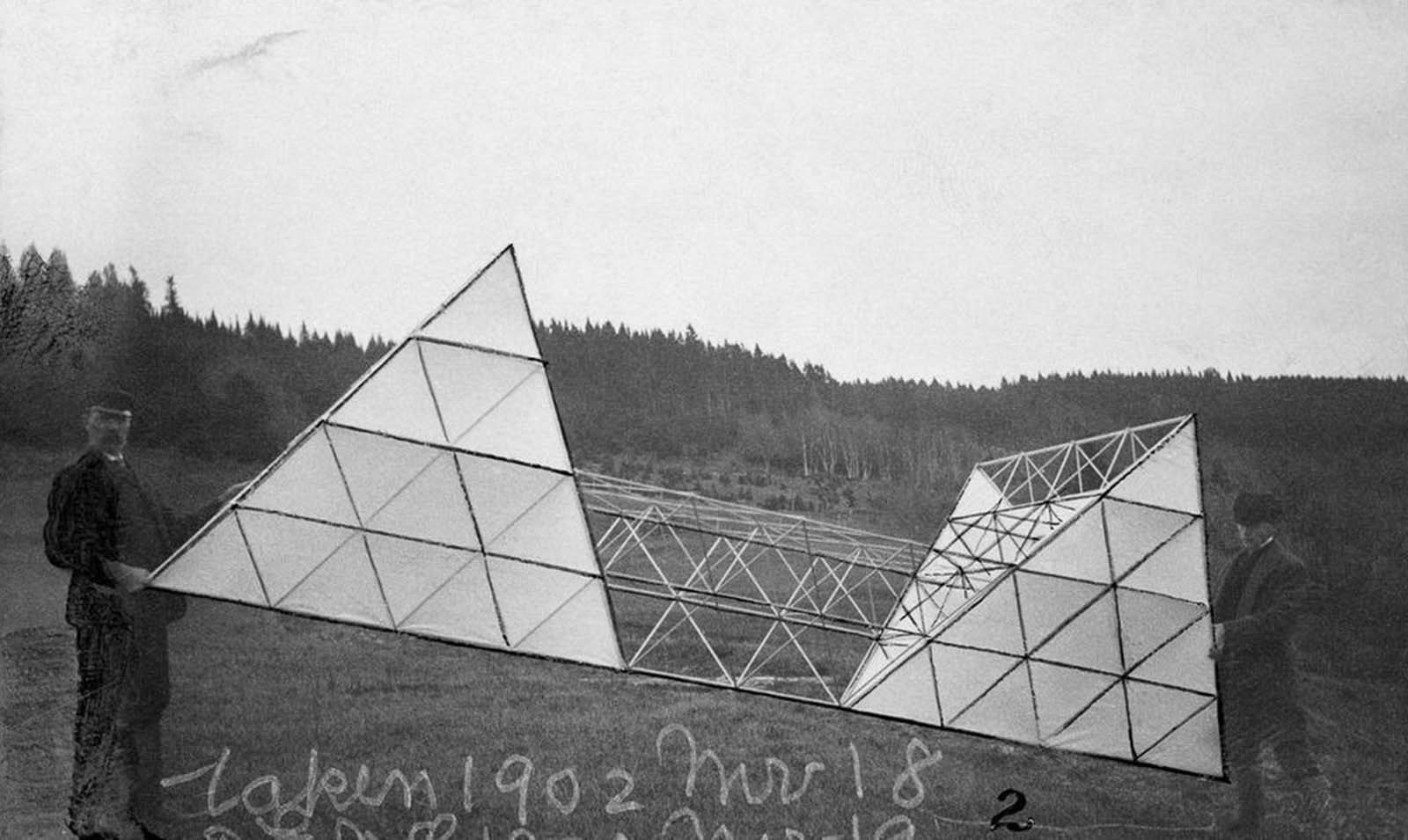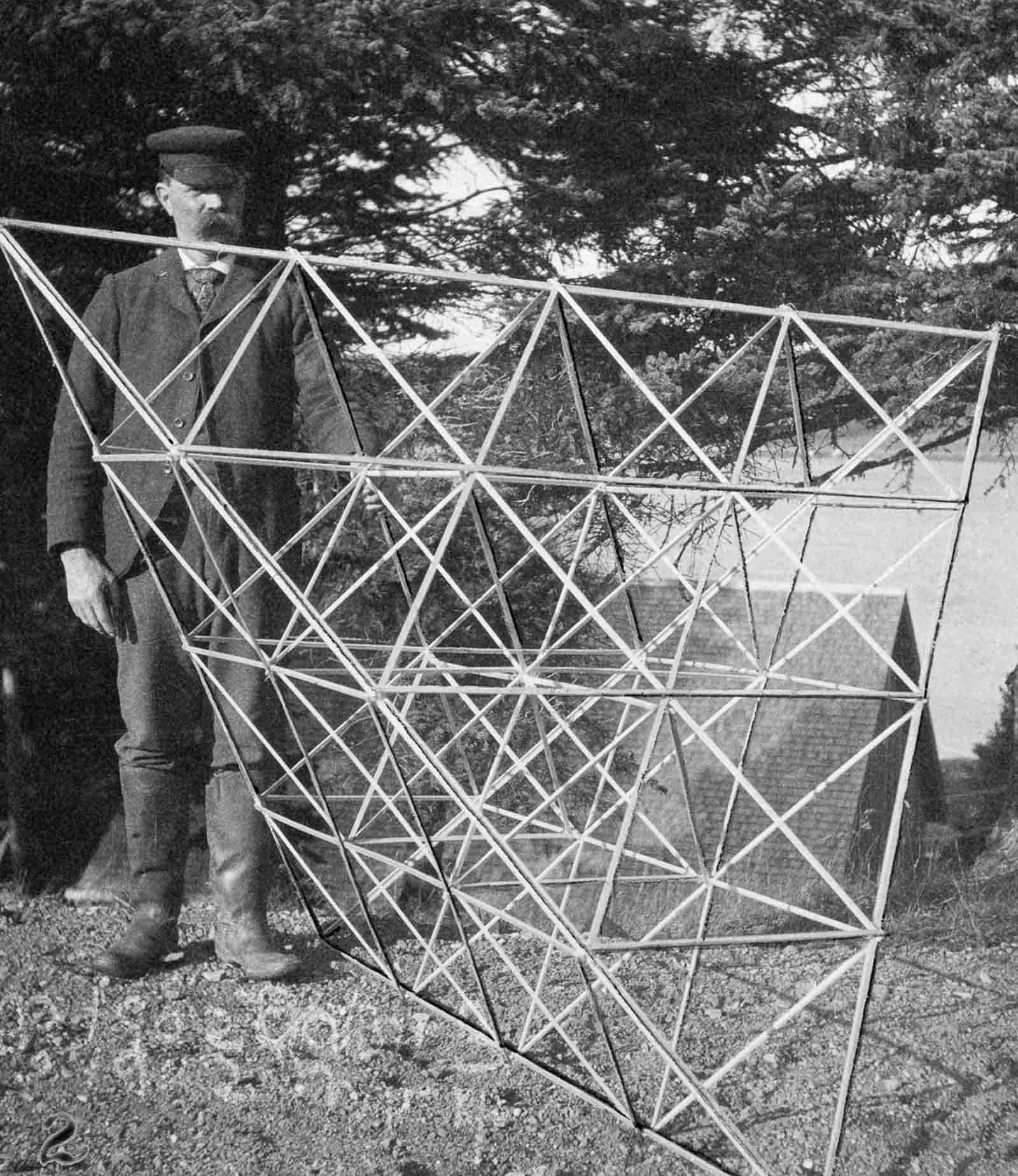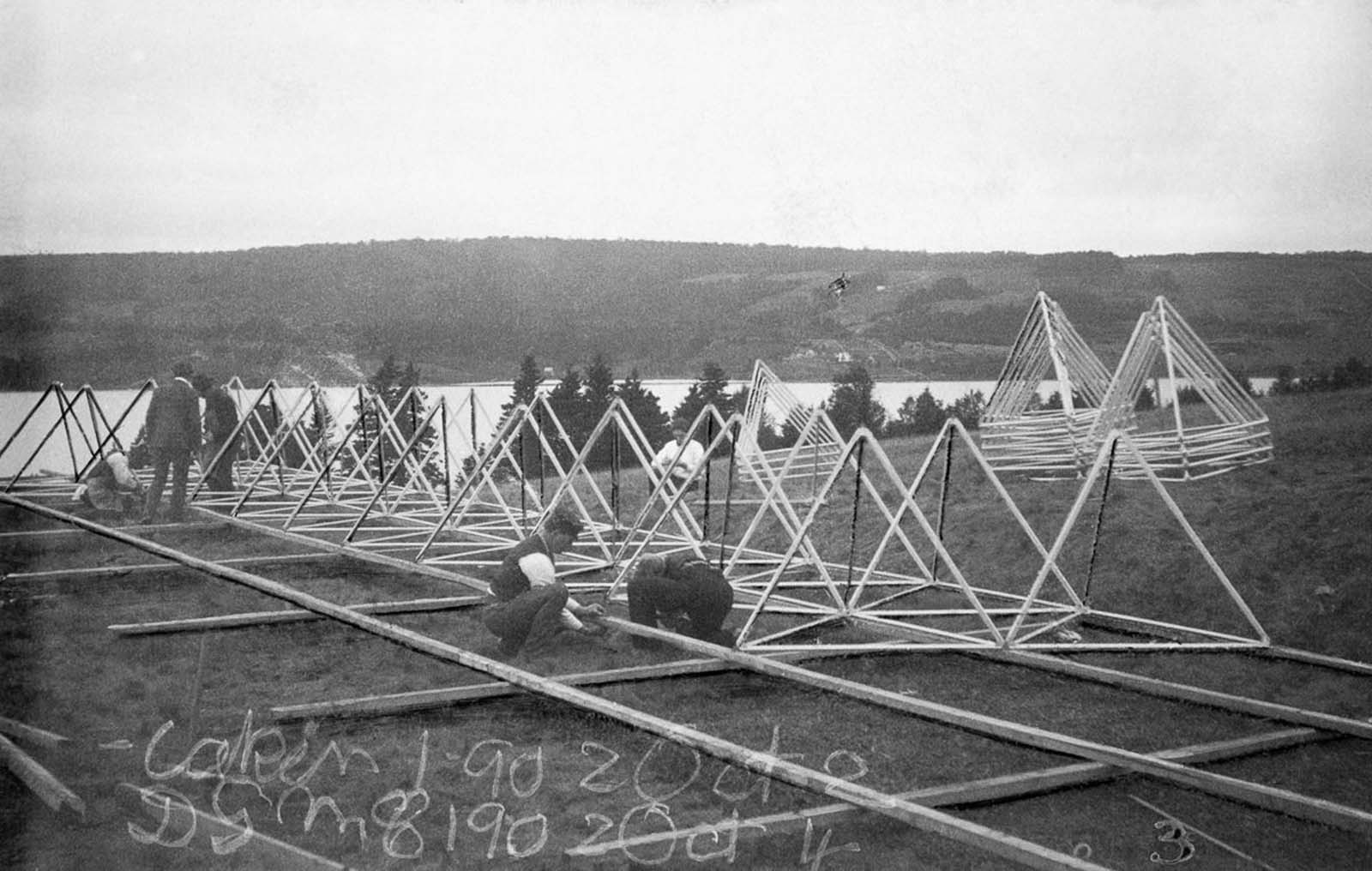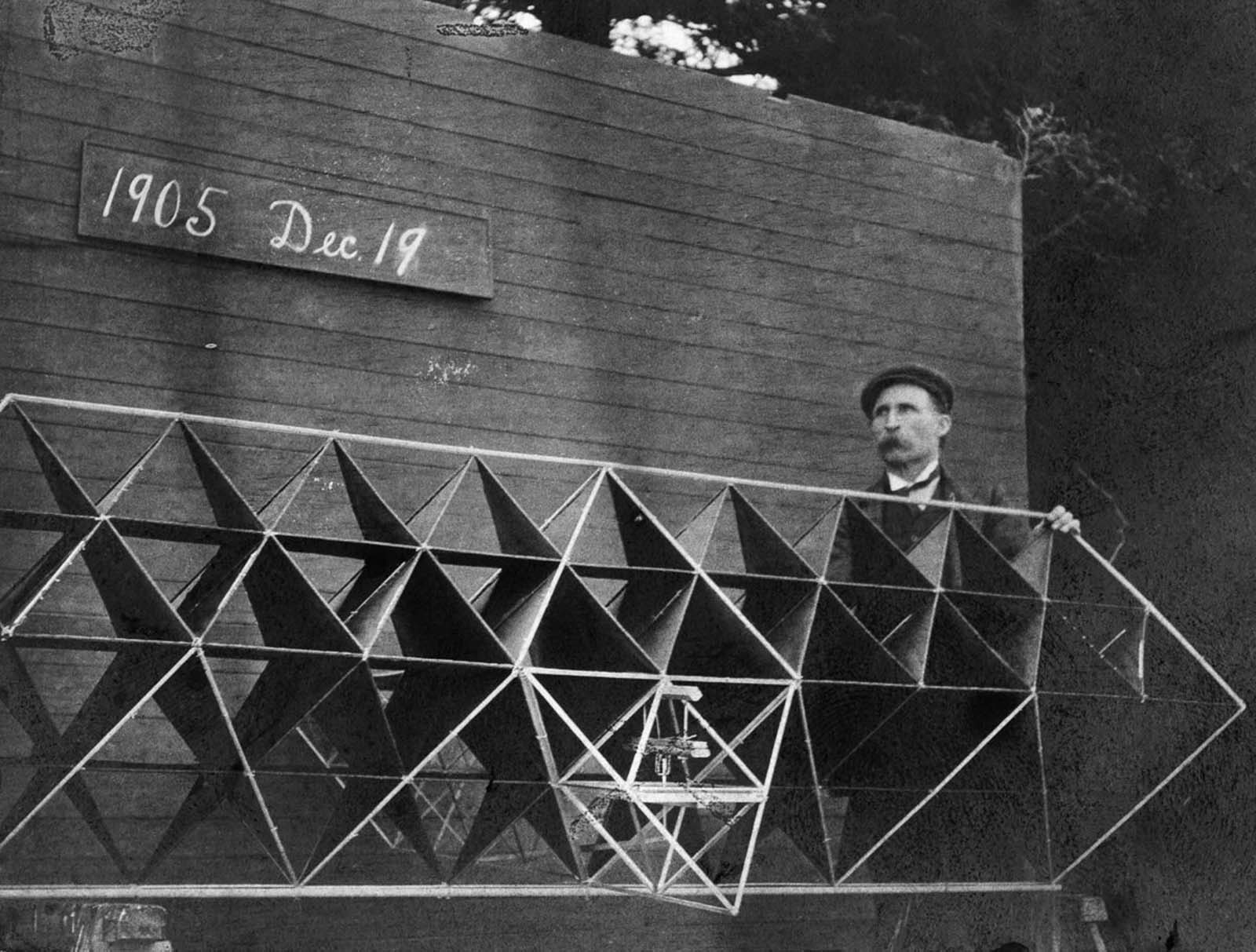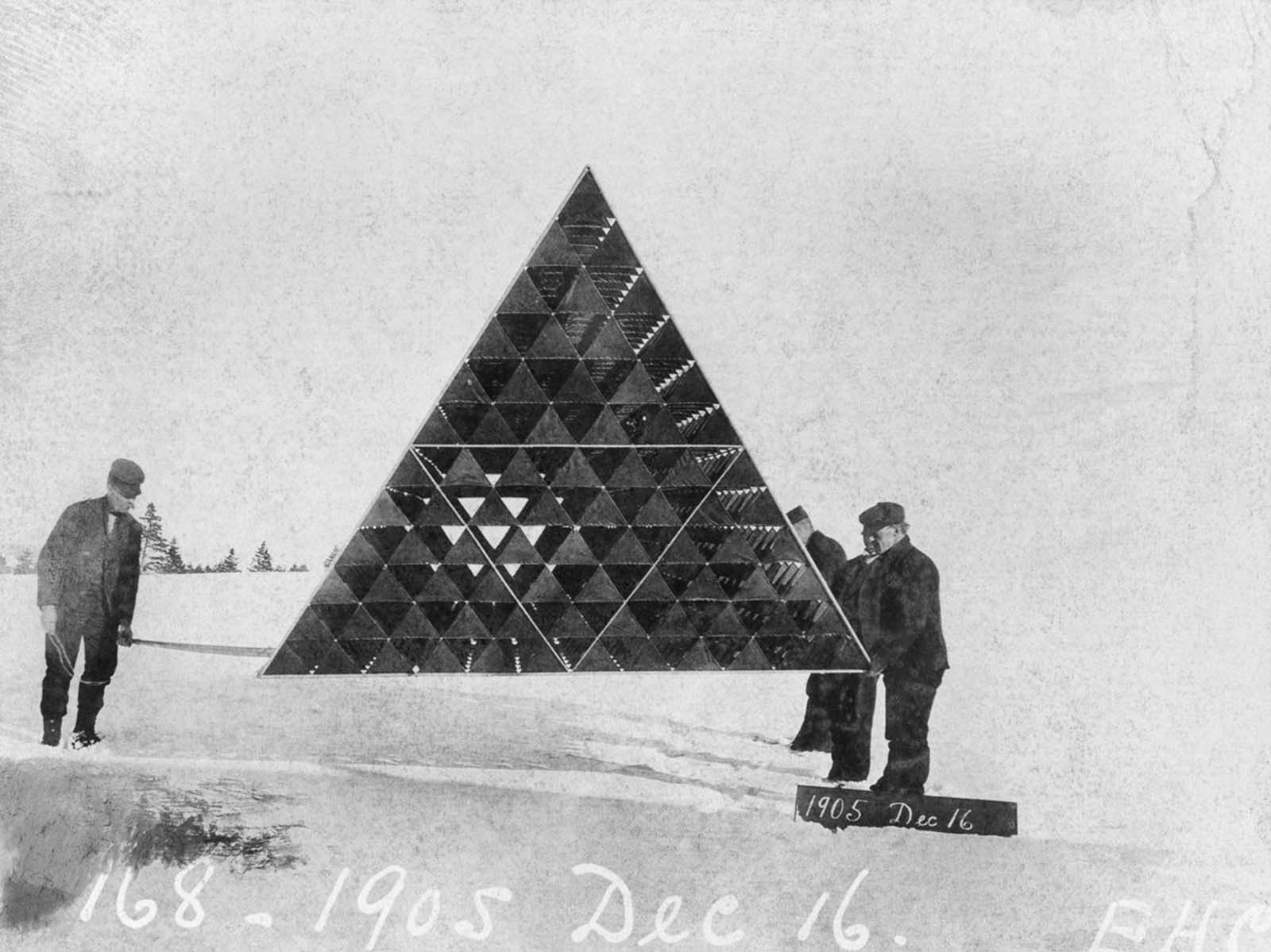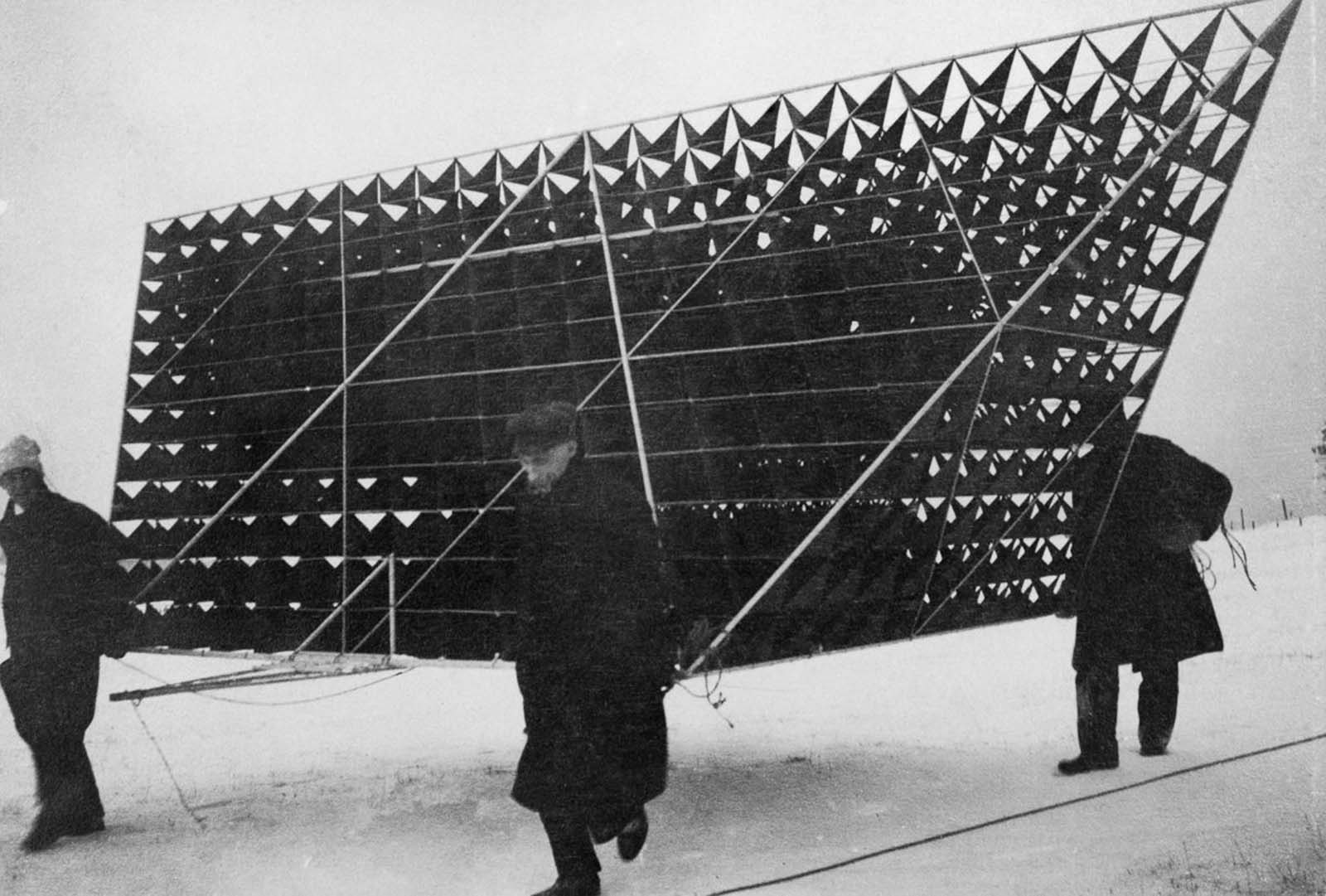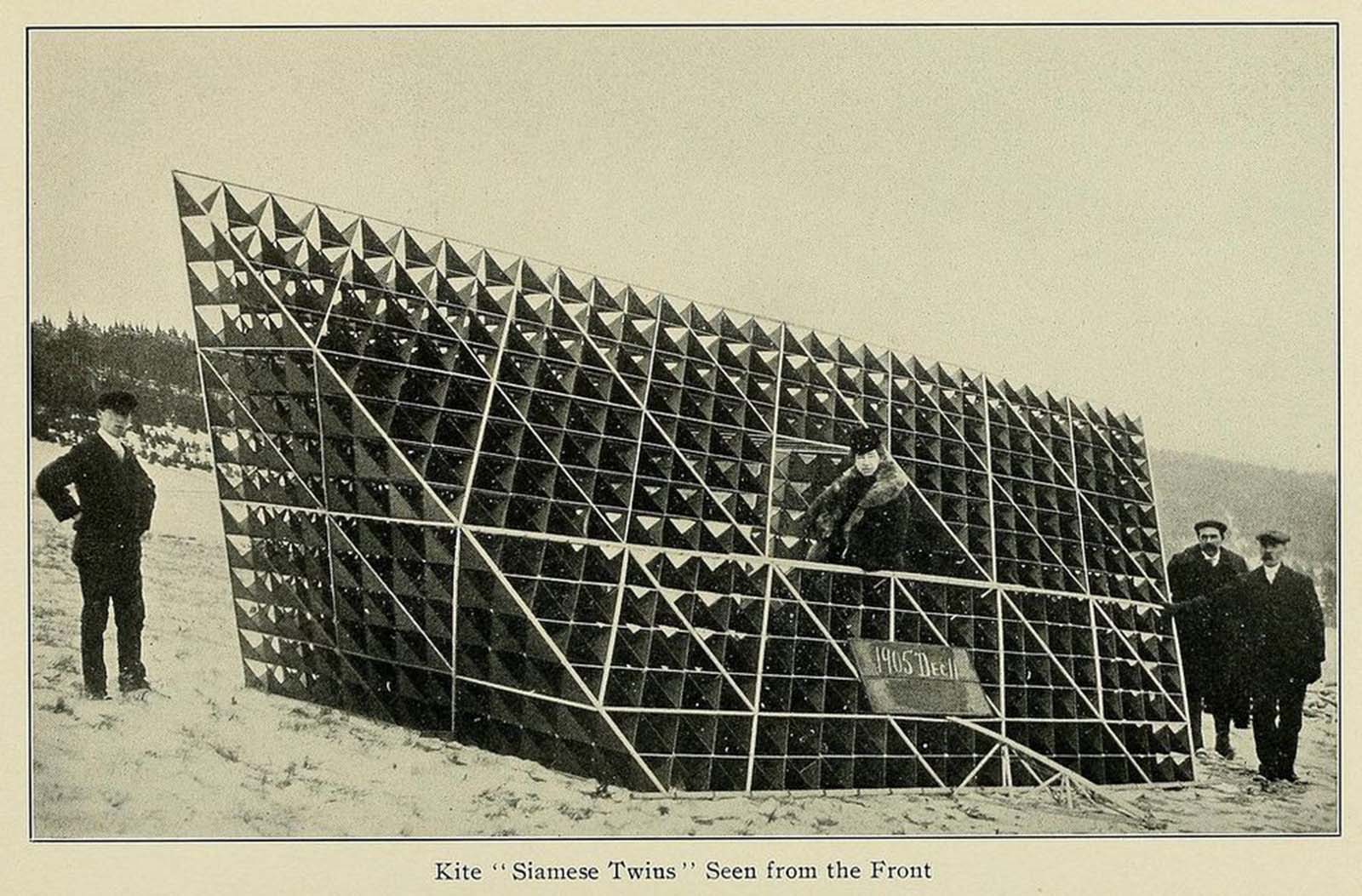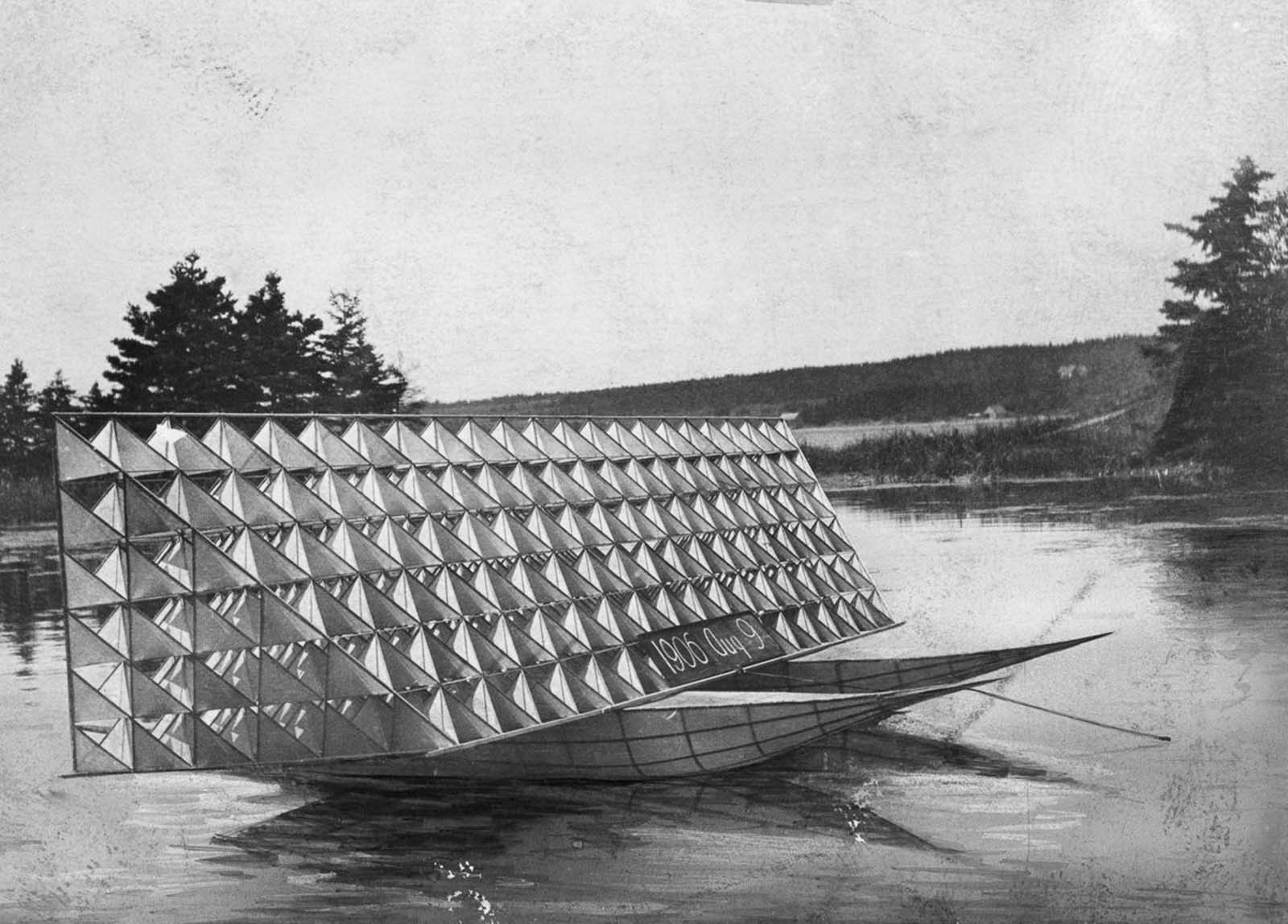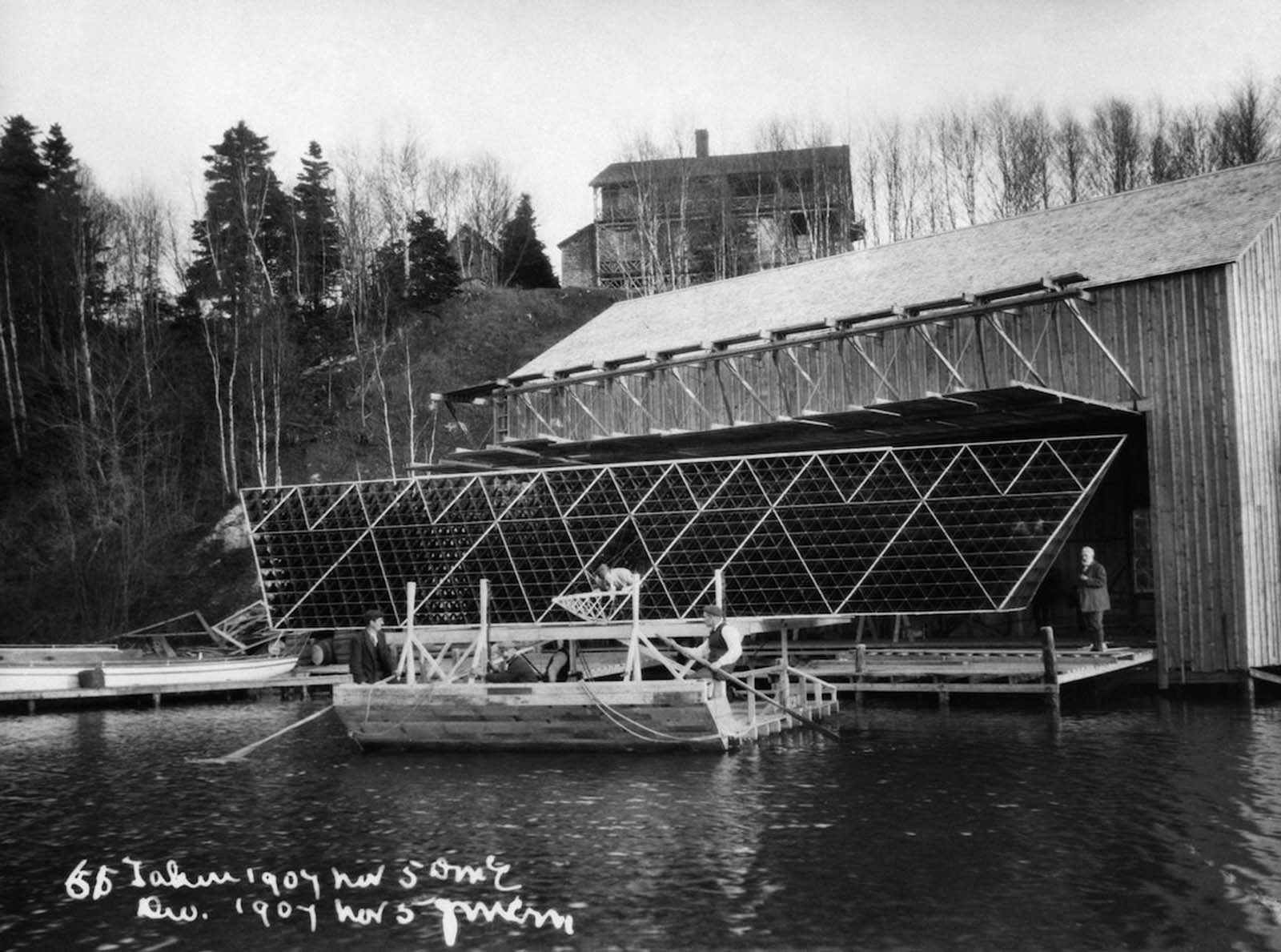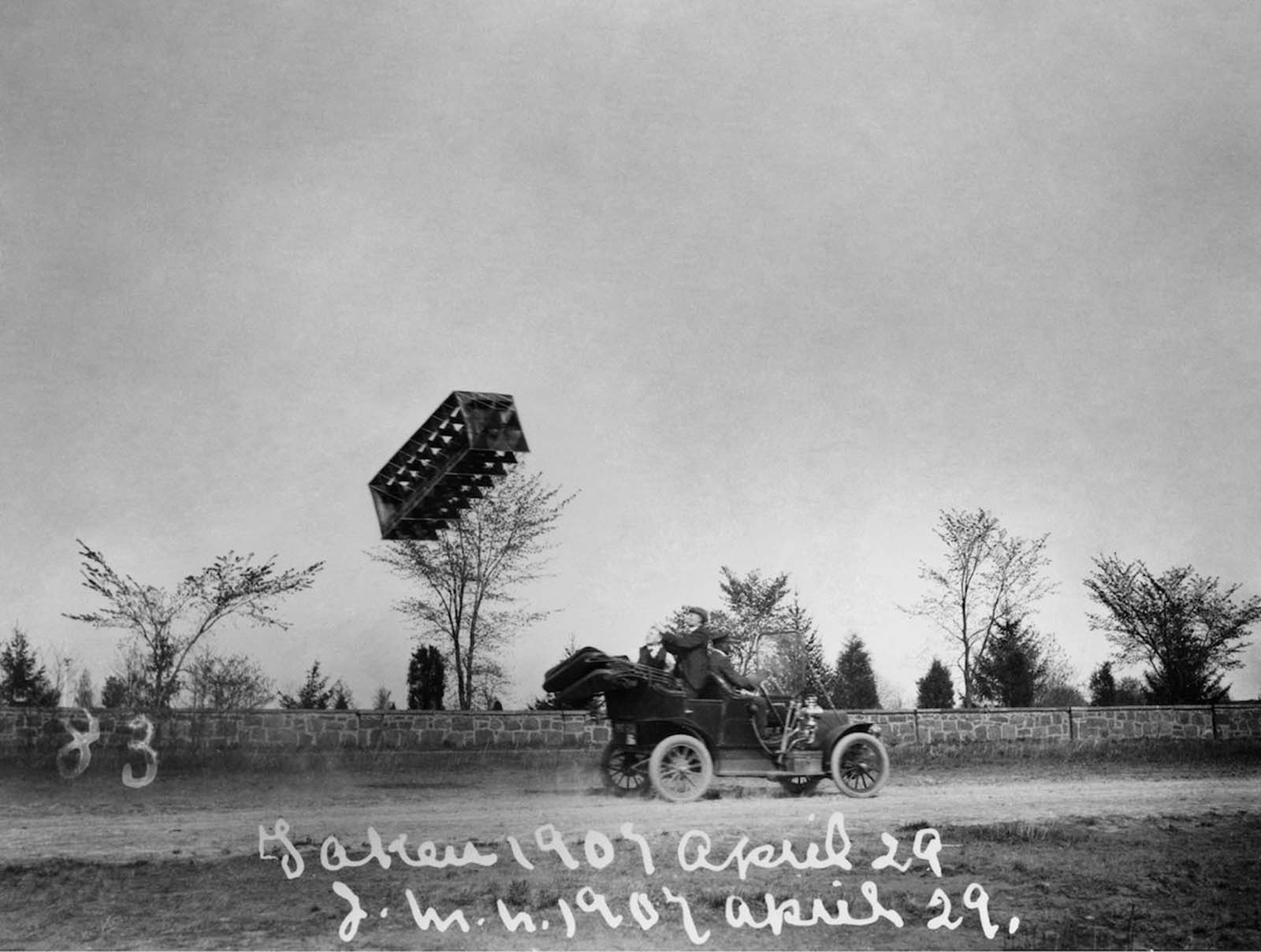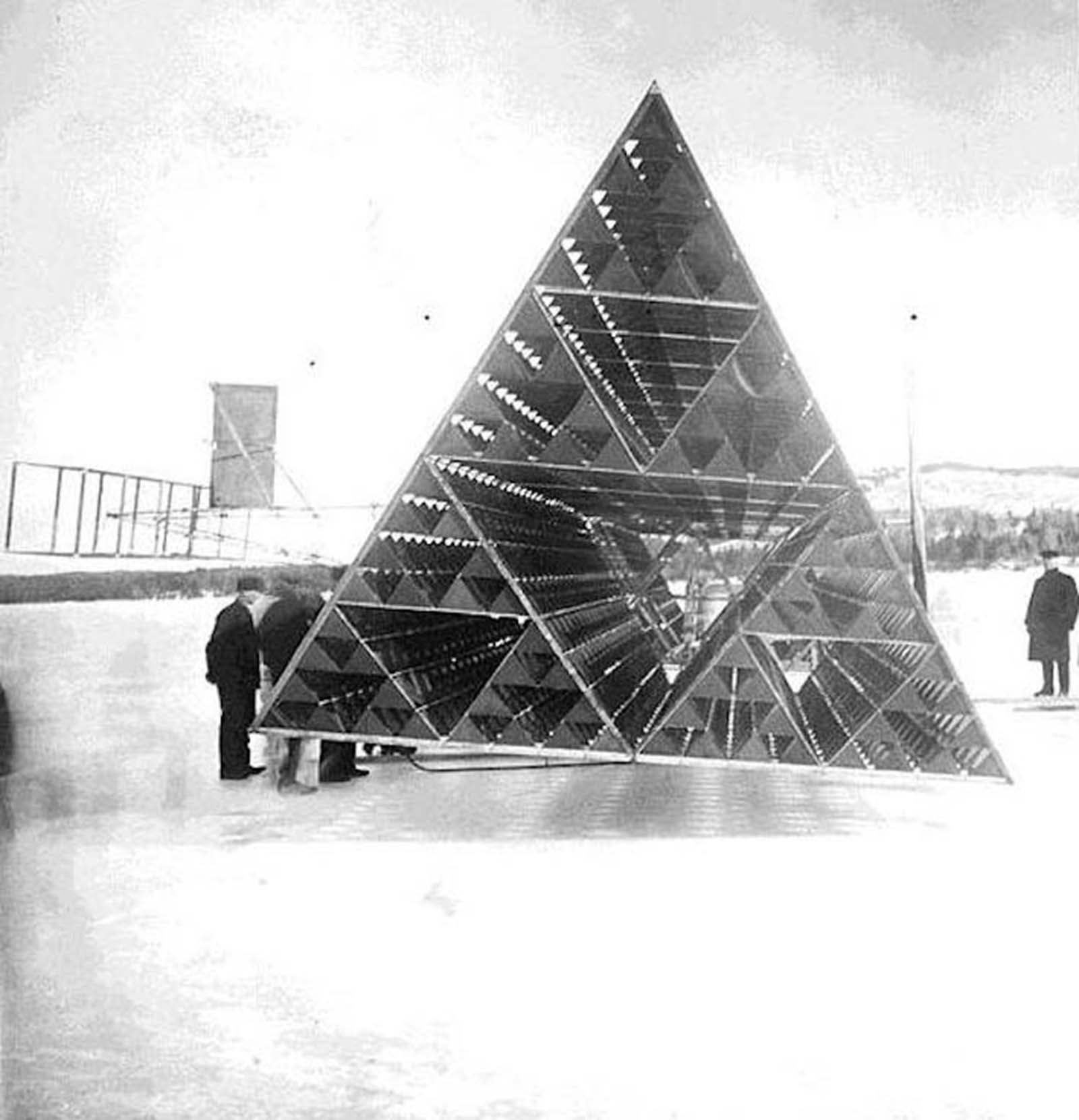In his continuous research, Bell became obsessed with the idea of creating a kite large enough to carry a man. He actually created the box kite design in this quest to create the ultimate kite. This particular design joined several triangular kites together with a frame to create a box. Doing so increased the kite’s surface area with little increase in weight – a good measure of improved flight capability. Bell combined several box-like cells to create large pyramidal structures with three triangular sides and a triangular base. This geometric form, known as a tetrahedral, is one of nature’s most stable structures. Although it looks pretty complicated, tetrahedral kites are very manageable when flying. His experimentation with the tetrahedron was used in construction projects (a tower on his property at Beinn Bhreagh in Cape Breton, N.S., and other structures) as well as in kite framing. Some of the sketches in his notebooks of tetrahedral design ideas show how enamored he was with the utility and strength of the tetrahedron as a three-dimensional structure. Other efforts in the development of early flight were achieved through his association with a talented group of individuals known as The Aerial Experiment Association. The members of the AEA, in addition to Bell himself, were: Mabel Gardiner Hubbard Bell, Frederick Walker (Casey) Baldwin, John Alexander Douglas McCurdy, Glenn Hammond Curtiss, and Lieutenant Thomas Etholen Selfridge. In 1907, Bell built the largest tetrahedral kite, named the Cygnet, meaning “little swan” in French. It was composed of over 3,393 cells, was 40 feet (12.2m) long, and weighed 91 kg. It successfully flew carrying a human passenger 168 feet above the water when towed behind a steamship. Unfortunately, it crashed and tore to pieces on landing. The man who was aboard, Thomas Etholen Selfridge, actually survived the flight but later became the first person to die in an airplane crash aboard the Wright Military Flyer in 1908. Although the Cygnet was beyond repair, Bell felt that she had “fulfilled her function” and had “demonstrated the important fact that the tetrahedral system can be utilized in structures intended for aerial locomotion.” Bell also experimented with a large circular “tetrahedral truss” design during the same period. The tetrahedral kite is stable and easy to fly, but is not a light-wind kite. The large number of structural spars makes it relatively heavy and it requires moderate to strong winds. Despite the gradual disinterest in kites and the growing success of the Wright brothers’ airplanes, Bell made two more massive tetrahedral kites, named Cygnet II, and III, but neither one was successful. His Cygnet III with a 70-horsepower motor was reported to have flown only one foot. Eventually, the famous scientist abandoned his experiments in 1912. Some of Bell’s kites are on display at the Alexander Graham Bell National Historic Site.
(Photo credit: Library of Congress). Notify me of new posts by email.
Δ Subscribe
